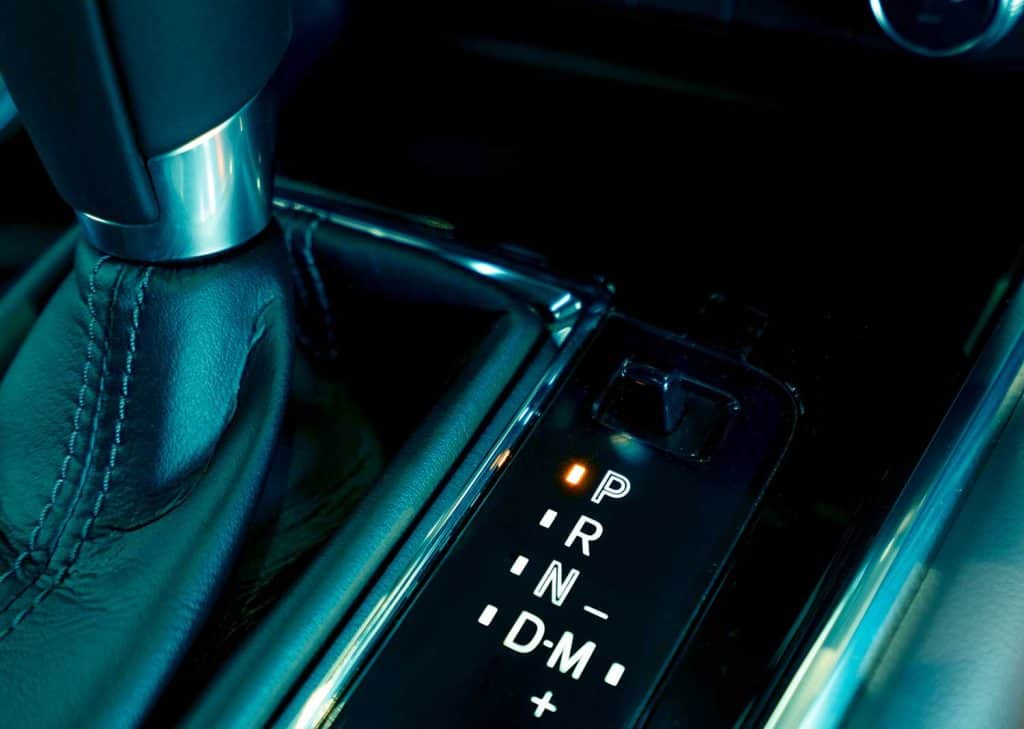Driving is part of your everyday life. To successfully get from place to place, your car needs to work effectively. Cars that fail to go into the appropriate gear don't just disrupt your daily schedule - they also put you in danger. If your Ford Transit won't shift into park, then what problems could your car be dealing with?
A Ford Transit may fail to shift gears for several reasons. The most common include:
- Broken shift cables
- Stretched transmission cables
- Struck or damaged parking brakes
- Failed shift lock solenoids
- A damaged shift mechanism
- Ignition damage
It is not safe to drive a car that won't effectively shift gears. If you can diagnose the problem that you're dealing with, though, you can get back on the road faster than ever.

[toc]
Why Won't Your Ford Transit Go Into Park?

Age, wear, and tear all have a detrimental impact on the overall health of your Ford Transit. There are specific forces, however, that can make it more difficult for you to shift your Transit into park. Some of the most common forms of damage that limit your control over your car include:
A Damaged Shift Cable
Your shift cable needs to connect to your transmission if you want to change gears. If this cable snaps, stretches, or otherwise disconnects from the structure beneath your hood, then you'll have a harder time controlling your Ford Transit. It may even be impossible for you to move your shifter, depending on the severity of the damage and the make of said shifter.
A Stretched Transmission Cable
A stretched transmission cable is a cable that's well on its way to breaking. You need your transmission cable to remain in good condition if you want to continue shifting gears effectively in your car. As your transmission cable stretches, it'll get harder for you to put your Ford Transit into park, if not impossible. The sooner you're able to act on the appropriate repairs, the better.
A Stuck Parking Brake
Engaging your parking brake protects your car from the combination of gravity and uneven pavement. If your parking brake ends up stuck, though, you can do significant damage to your transmission. The longer you leave your parking brake stuck, the more difficult it's going to be for you to change gears while on the road.
Luckily, it isn't too difficult to fix a stuck parking brake. If you can manually move the brake out of its locked position, you should be in good shape. Alternatively, you may need to rock the brake. There may, however, be an obstacle preventing the brake's release, or one of its mechanisms may have worn. If you can't move your brake without putting significant pressure onto the lever, reach out to a professional in your area for support.
Failed Shift Lock Solenoids
Your shift lock solenoids dictate how much transmission fluid makes its way into your transmission as your car runs. If you're having trouble parking your car, then it's possible that your transmission might be overwhelmed by fluids. Alternatively, the shift locks may not be letting any fluid reach your transmission at all.
To test whether or not your solenoids are still in working condition, see how much transmission fluid you have underneath your hood. If you're not tracking your fluid levels, you may not have the easiest time determining what your average flow of transmission fluid looks like. That said, you can still assess the depth of your fluid and whether or not it seems appropriate, given the last time you restocked.
Shift Mechanism Damage
There's also a chance that the physical structure of your shift mechanism may have suffered damage. If your shifter ends up jammed, overly-loose, or disconnected from the appropriate cables, then you may try to shift your Ford Transit into park only to find that you've actually shifted into reverse or neutral.
Note, too, that your shift mechanism may end up blocked. Even something as innocuous as food can limit the mobility of your shifter, putting you and the passengers in your car in harm's way.
Ignition Key Tumbler Damage
The older your Ford Transit is, the more likely it is that your ignition key tumbler will suffer damage. If you can't shift your car out of park, most mechanics will look to your tumblers first. However, damage to a tumbler can make it just as difficult to set your car in park after you've been on the road.
Luckily, ignition key tumblers are simple to replace, meaning that an experienced mechanic can have your Ford Transit returned to you in working order without too much fuss.
Why Won't My Ford Transit Go Into Gear?

The means behind Ford Transit gear failure often mirror those behind the vehicle's parking failure. If you're having trouble changing your Ford Transit's gears, then take your car to a mechanic as soon as possible.
An experienced professional - or someone well-versed with their Ford Transit's interior - can help you identify the force making it more dangerous for you to drive. Some of the most common challenges preventing your Ford Transit from going into gear include:
- Ignition damage
- Transmission failure
- Damaged shift mechanics and locks
- Worn transmission cables
- Older or worn brakes
- A faulty shift cable
How Do You Select the Reverse Gear on a Ford Transit?
To select the reverse gear on a Ford Transit, you can refer to the vehicle's chapter on its transmission. This section notes that operating the gear shift in a Ford Transit requires you to lift the transmission.
When you wish to reverse your vehicle, first step on the brakes. Then lift the shifter's collar until you can lift it no further. Finally, push the gear shift until the embellished "R" lights up. At this point, your vehicle should begin to move backward.
You can increase the speed at which you reverse by pressing on the gas. However, your Ford Transit will move backward in inches if you take your foot off of the brakes.
This process requires much the same attention, even if your Ford Transit comes equipped with an automatic shifter. If you do find yourself contending with a dial, you can place your Ford in park by:
- Pressing down on the brakes
- Turning the dial until the indicator points towards the embellished "R"
- Wait until the "R" lights up
- Slowly remove your foot from the brake
When driving a Ford Transit, avoid shifting gears in the middle of the road. If you put your car into reverse while in traffic, you put yourself, your loved ones, and other drivers around you at risk.
When Should Shifter Cables Be Replaced?
The lifetime of your shifter cables will vary based on the miles you put on your Ford Transit. The more frequently you use your vehicle, the sooner you'll have to replace your cables.
That said, you should ask your local mechanic to examine shifter cables at least five years after their initial installation. Shifter cables tend to give out between five and eight years after their first use, meaning that your Ford may begin to show signs of wear within that period. You can also request that area professionals look at your cables earlier to get ahead of any unanticipated failures.
How Do You Put a Ford Transit in Neutral?

When you put your Ford in neutral, you limit its automatic movement. That said, if you choose to put your car in neutral on a hill or curb, you can expect your car to move in the same direction as your incline.
Putting your Ford Transit in neutral requires many of the same mechanics you'd use to put your car into reverse. To get started, you'll want to:
- Put your foot on the brake and secure your car.
- If using a traditional shifter, lift up on the shifter's cover until movement is no longer possible.
- Shift the gear selector until the indicator points towards the embellished "N".
- Slowly remove your foot from the brake if such behavior is appropriate.
If you're working with an automatic shifter, first engage your brakes. Then direct the transmission's indicator towards the embellished "N" and wait for the letter to light up. Only then is it safe for you to remove your foot from the car's brake.
Stay in Neutral Mode
If you want your vehicle to remain in neutral for an extended period of time, you can engage the Ford Transit's "Stay in Neutral" mode. To enter this mode, you need to:
- Put your foot on the car's brakes and stop the vehicle's movement.
- Lift the selector's cover until you can no longer move it without effort.
- Point the shifter's indicator towards the car's "N" symbol.
- Before removing your foot from the break, press the vehicle's sport or manual button twice.
You'll know that you've engaged the car's "Stay in Manual" mode if your indicator begins to blink. Do not remove your foot from the vehicle's brake until you know that your car is in neutral. Even then, assess your surroundings accordingly.
Get Your Ford Transit Back in Gear
A damaged Ford Transit isn't impossible to repair. If you can't get your car to shift into park or any other gears, you can work with a professional to diagnose the problem. Once you have an idea of what your car's damage looks like, you can invest in the appropriate repairs and get back on the road.
Don't let a sticking gear shift stop you from driving. Take a closer look at your Ford Transit.
